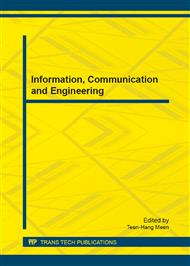p.3
p.9
p.15
p.20
p.26
p.32
p.37
p.43
Using Eye-Tracking and Support Vector Machine to Measure Learning Attention in eLearning
Abstract:
For eLearning, how to naturally measure the learning attention of students with lower cost devices in an unsupervised learning environment is a crucial issue. Students often far away and out of teachers’ control in above situation which may cause students do not have strong learning motivation and might feel fatigued and inattentive for learning. A real-time and naturally learning attention measure approach can support instructor to better control the learning attention of students in unsupervised learning environment. This paper proposes an integrated approach, named Real-time Learning Attention Feedback System (RLAFS) which could naturally measure learning attention in unsupervised learning environments. The system architecture of RLAFS consists with three layers: first layer is Image preprocessing layer, which is responsible for image processing and motion detection. Second is eyebrow region detection layer, which is focus on the features of face and eyes capturing and positioning. Classifier layer is the third layer, in which integral image, volumetric features and finite-state-machine are used to capture the current state of learning attention of students. Consequently, support vector machine is utilized to classify the level of learning attention. The experiments are conducted in an unsupervised environment, and results showed RLAFS is a promising approach which can naturally measure learning attention and has a significant impact on learning efficient.
Info:
Periodical:
Pages:
9-14
Citation:
Online since:
February 2013
Authors:
Price:
Сopyright:
© 2013 Trans Tech Publications Ltd. All Rights Reserved
Share:
Citation:


